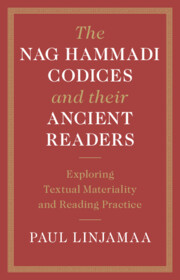 The Nag Hammadi Codices and their Ancient Readers
The Nag Hammadi Codices and their Ancient Readers Book contents
- The Nag Hammadi Codices and their Ancient Readers
- The Nag Hammadi Codices and their Ancient Readers
- Copyright page
- Contents
- Figures
- Acknowledgements
- Note on Transcription and Translation
- Abbreviations
- Introduction
- 1 Christian Book Culture, New Philology and Gnosticism
- 2 The Find Story and the Ethics of Postmodern Manuscript Archaeology
- 3 The Construction of Codex I: Scribal Errors as Clues to Context
- 4 Notes Made by Monks: The Marginal Markings in Codex I and Codex VIII
- 5 Vowel Constellations and Secret Language
- 6 The Sacred Symbols in the Nag Hammadi Codices: Books as Weapons in Demonic War
- 7 Textual Fluidity and Multiple Versions in Monastic Textual Practice
- Conclusion: The Nag Hammadi Codices from a ‘Textual Community’ Perspective
- Bibliography
- Index
- References
Bibliography
Published online by Cambridge University Press: 04 January 2024
- The Nag Hammadi Codices and their Ancient Readers
- The Nag Hammadi Codices and their Ancient Readers
- Copyright page
- Contents
- Figures
- Acknowledgements
- Note on Transcription and Translation
- Abbreviations
- Introduction
- 1 Christian Book Culture, New Philology and Gnosticism
- 2 The Find Story and the Ethics of Postmodern Manuscript Archaeology
- 3 The Construction of Codex I: Scribal Errors as Clues to Context
- 4 Notes Made by Monks: The Marginal Markings in Codex I and Codex VIII
- 5 Vowel Constellations and Secret Language
- 6 The Sacred Symbols in the Nag Hammadi Codices: Books as Weapons in Demonic War
- 7 Textual Fluidity and Multiple Versions in Monastic Textual Practice
- Conclusion: The Nag Hammadi Codices from a ‘Textual Community’ Perspective
- Bibliography
- Index
- References
Summary
- Type
- Chapter
- Information
- The Nag Hammadi Codices and their Ancient ReadersExploring Textual Materiality and Reading Practice, pp. 234 - 260Publisher: Cambridge University PressPrint publication year: 2024
- Creative Commons
- This content is Open Access and distributed under the terms of the Creative Commons Attribution licence CC-BY-NC 4.0 https://creativecommons.org/cclicenses/


